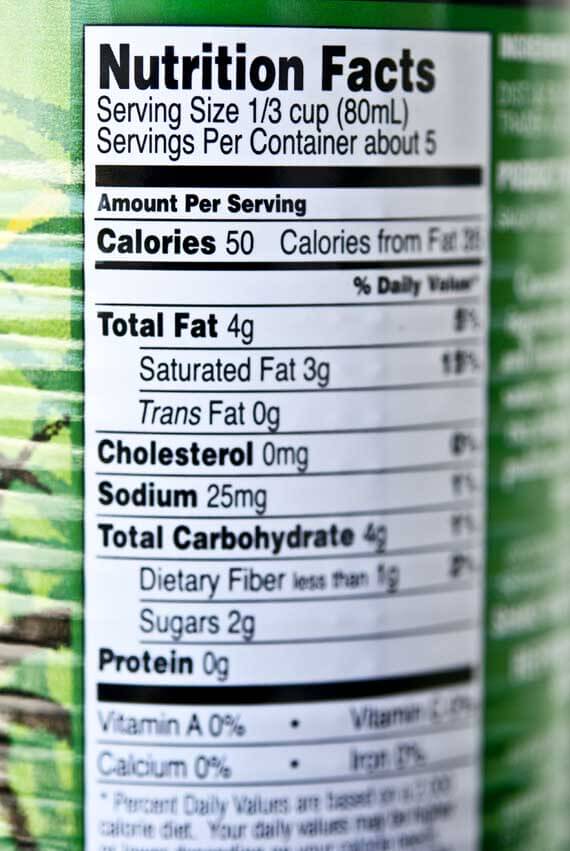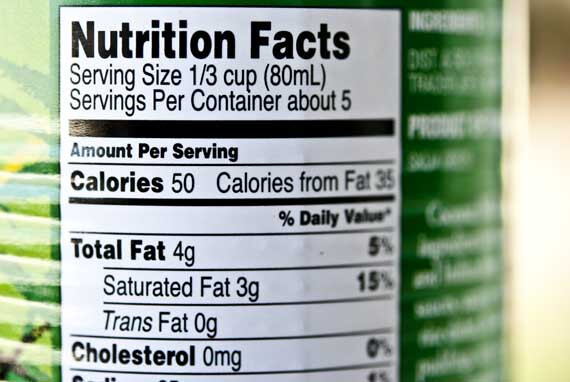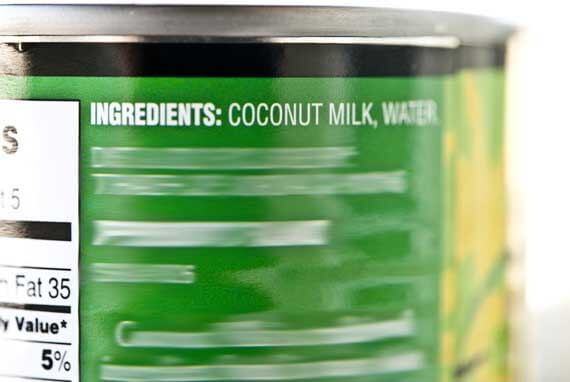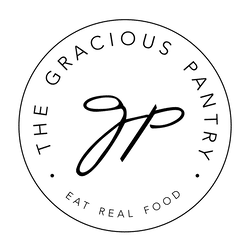Reading Labels For Clean Eating
A lot of people ask me about reading labels for clean eating. And the truth is, it’s a difficult topic to cover simply because there are soooooo many ingredients out there. It would be virtually impossibly for me to make a list of them all. So until now, I’ve avoided the subject.
But I’m not one to ignore questions, and I don’t like to leave people hanging. So I thought I would share the principle I used when learning to read labels for clean eating.
READING LABELS FOR CLEAN EATING:

NUMBER OF INGREDIENTS:
Many people believe that it’s the number of ingredients that matter. There is a theory out there than anything with more than 5 or 6 ingredients means the product is not clean. While I understand the thinking behind this, nothing could be further from the truth.
Most of my recipes have more than 5 or 6 ingredients and they are all considered clean in varying degrees (depending on your food philosophy).
You could have a food product with 30 ingredients, but if those ingredients are all clean and the item is not processed, it’s totally fine. Grant it, I don’t think you would ever find such an item, but go with me here…
READING LABELS:
This is how I did it in the beginning (and still do to some degree).
When looking at an ingredient list, consider each ingredient individually. Is it something you would buy separately to cook with in your own kitchen?
For example, let’s start with an random jar of spaghetti sauce. If the ingredients are, “tomatoes, garlic, olive oil and basil”, then you know it’s clean because you would buy JUST tomatoes to cook with. You would also buy JUST garlic to cook with. Same for olive oil and basil.
But if the ingredient list says, “tomatoes, garlic, olive oil, basil and maltodextrin”, you would want to pass it by. You would never go to the store for some maltodextrin to cook with at home.
Of course, there are always exceptions to the rule, but generally speaking, this will keep you pretty much on track. Word of warning though, it can also cause a bit of frustration when you start looking at labels this way. You have to hunt for clean products. They aren’t easy to find.
But then, that is the focus of clean eating, is it not? You want to purchase less packaged products and replace them with whole food items, mostly from the produce section. Foods that do not require labels because the ingredient list, IS the item itself.
EXAMPLES OF CLEAN FOODS:
(no labels required, for the most part)
- Oranges
- Celery
- Lettuce
- Chicken
- Plain oats
- Salmon
- Millet
- Barley
- Almonds
- Walnuts
These are all examples of what clean foods are. Think of it this way. You want to purchase INGREDIENTS. Not prepared foods.
Yes, this takes a bit of forethought and planning. Clean eaters do cook a lot, and most of them love it. Just know that over time, the cooking and prep work do become routine. Once you’ve done it for a while, you do it efficiently, quickly and really without any stress. It just becomes a part of the lifestyle.
A WORD ABOUT THE GRAMS AND PERCENTAGES:

Many people also ask me about the percentages you find on a food label (pictured above). These are the ones that tell you that a product has 54 grams of carbs, 50% of your vitamin C requirements for the day, or 30 grams of protein per serving.
This part of the label can be vital for many people, especially those with blood sugar issues and other medical problems. However, this part of the label will tell you NOTHING about whether an item is clean or not. So if clean eating is your goal, check the INGREDIENT LIST. Not the percentages. Those are used for other things.
I’ll use this can of coconut milk as an example. This is what you want to look at to determine if a product is clean (we’ll set aside the BPA issue right now for the purpose of the example):

You see in this example that the only thing in the ingredient list is coconut milk and water. Both are clean items, so this item is considered clean. (Again, BPA issues aside).
The percentages, are all together different. They tell you things like how many calories there are and how much vitamin A you are getting. While this is important information, it will not tell you if the item qualifies as clean.
So that, in a nutshell, is how I started. Once I had that down, I started educating myself on individual ingredients and what they are. I don’t know everything and I still scratch my head on a few items. But it really comes down to research and being willing to learn something new. You absolutely must educate yourself in order to eat clean. Will it happen overnight? No. Will you make mistakes? Plenty of them. But that’s all part of the learning curve. Just keep going. It will all become second nature after a while. I promise.
NEED SOME COACHING TO GET STARTED OR BACK ON TRACK?
These self-paced 8 lessons will guide you through getting started with clean eating. Enjoy access to 8 content pages with audio and downloads. Get more info here.
Article is an original work and is © Tiffany McCauley. It may not be reproduced for any reason without written permission by the author.


Thank you for this! It helps! It really is so hard to find everything clean! So disappointing!
This is awesome & SO helpful.
Thank you very much.
This is such an east way to start reading labels. Thanks for the info!
I really liked reading this because it is something I would have written. I have been clean eating for well over 2 years now. I do cook a lot and at first it was a challenge. Like the first time I had a head cold in the very beginning (I don’t get sick much anymore) and I wanted hot soup. I couldn’t run out to the store for my trusty can of Chicken Noodle Soup. I had to make my own veggie soup from scratch while sick. But it didn’t take long and it was really true medicine. Not like the crap that comes from the can. It’s eye opening to me to see what some people classify as eating healthy. Cans of soup, prepackaged meals. They say their family is eating healthy but that is just not the case with all the chemicals they are eating. You wrote it perfectly above; if you wouldn’t purchase that ingredient in the store to make something why would you eat it. People who still eat prepackaged foods and foods with ingredients they cannot read have just not entered into this new awareness where our bodies should get whole fresh ingredients and not chemicals and concoctions made in factory. But once they realize it, they get it. Because it makes such simple sense. For me it’s even more of a challenge because we are a 95% meatless household for the most part. We buy fish occasionally and sometimes my 14 year old son asks for wings so I do make those for him, but I buy the Publix Greenwise wings which are the cleaner option and I make the hot sauce myself without all the natural flavors and chemicals. Also, we are gluten free, but have found an awesome bread company that we use and are able to buy a two month supply online. There are ways to eat clean and healthy. Sure they are more of a challenge than the conventional ways, but since we only get one body and one life, shouldn’t we spend more effort caring for it than we do for our cars? Thank you for this site. It’s awesome.
I couldn’t agree more!
If you don’t mind me asking, what bread are you buying online? I’ve been looking for an awesome gluten free bread!
I am gluten-free as well. Can you share your source for bread, please?
And I totally agree with what you said. It amazes me what some people eat. When my dad moved in with us due to health reasons, he complained that we ate “weird” food. But he was used to a diet of fast food and frozen packaged meals. Yuck!
Brenda – In my experience, clean eating and gluten free bread are never in the same sentence. It’s not impossible, but it’s hard to find. I gave up and started making my own. I’m tweaking a recipe now that I hope to post soon.
Perfectly written!
I could tell that was Trader Joe’s can of light coconut milk right away! I know my labels! 🙂
Really good, easy to understand guide! I look for clean foods and try to eat clean as often as I can…it’s hard though with all the tricky “natural, good for you” foods out there.
Never believe the front label. The ingredient list tells you everything you need to know about an item.
This is the bread the I purchase online: http://www.samisbakery.com/
The front of labels are such a crock. The best is the soup that says no added MSG and then the ingredient list lists hidden forms of MSG. It’s good to get familiar with them: http://www.truthinlabeling.org/hiddensources.html
I prefer to make my own soups from scratch and this way I know exactly what is going in it.
SO true. Im about to start a 50 day clean eating and whole foods challenge and Ive starting paying attention to the ingredients for the first time. Ive always been health conscious but mainly looked at the calories, fat, sodium, etc. Now that I am truly paying attention to what I have been eating for all these years I am beyond horrified. Thank you for this post, it is so important!
I agree that it becomes second nature for looking at ingredients and then revising how you cook and prepare for meals. What once felt overwhelming (making salad dressing from scratch and dinner too!) is now just part of how we do things around here! We’ve been eating clean for just over a year and it really is second nature. Thanks for your encourgement.
So there is no such thing as a clean protein powder? Also, is it safe to say that if you avoid the non-clean eating ingredients that you are essentially avoiding GMO too or could GMO be found in products you think are clean that are not organic?
GMO’s could be in anything at this point. Until companies are forced to label their products, it’s tough for us to know. But you can avoid them for the most part by avoiding soy, corn, wheat and potatoes.
I am new to the clean eatting and am finding your web site very informative. Thank you for all the information and I look forward to reading more.
My pleasure! 🙂
This is how I shop, and I agree that it can be very frustrating at times. Are there things added to food that are safe? Or are there no exceptions? For example, products that have all real items and then citric acid or pectin.. I’ve read about some of these things and come away even more confused. I understand that choosing items without them is best, but are these things harmful?
Yes, and no. I’m beginning to realize that these products have changed over time. Or at the very least, their processing has. Things that never affected me before, definitely affect me now and supposedly, they are the same ingredients. So I just stay away from them all together.
I’ve always had questions about some grains and pastas. What if the label says just “corn” instead of “whole corn”? Or “duram wheat semilina”. Neither of those say “whole” but they don’t appear to be refined at all. Any thoughts?
You can’t really label corn as “whole”. So corn will never say that. The best you can do with corn is to purchase it organic to avoid GMO’s. But with wheat, it’s a different story. Anything that does not say 100% whole in front of it is processed and not clean.
Awesome post! I am just starting to get into clean eating and I loved how you said it’s all about buying ingredients, not prepared meals! That really clicked in my mind- thanks so much for the information! 🙂
My pleasure! 🙂
This is something I have been wanting to do for a long time and will begin today. My family eats relatively healthy, including lots of vegetables and fruits and as few prepackaged items as possible. I have always been aware of additives and sodium amounts and over-processing, but now I will know what to look for. The idea that if you wouldn’t buy a particular ingredient, don’t purchase the product is awesome advice. It is overwhelming but I will take baby steps.
You’ll get there. After a while it will just become habit. Hang in there!
Im so glad that I found your website! I’m currently reading “Salt Sugar Fat” and I’m disgusted at the food industry, as well as the FDA/USDA for making their priorities profits rather than health. This has led me to begin the transition to clean eating for our family. I know that it will take awhile to become 100% clean, but I’m inspired to begin cleaning out the pantry & starting to introduce clean meals & snacks. I’m taking the slow road so that the meal prep doesn’t become overwhelming. I look forward to referencing your site for new recipes & ideas! Thank you!!
Angie – Welcome! I’m sure you’ll do great! 🙂
I like Trader Joe’s Sparkling water (Lime flavor). The label says it has “Natural Flavors” but I don’t know what that is. It’s just water & carbonation. How can I found out what Natural Flavors are? or shoudl I guess that it’s relatively clean? …and Thanks for creating such a great website. I’m new to this, but really am enjoying learning from you.
A great resource and well written, THANKS!!
Mandy – Thank you! 🙂
What kind of whey protein powder do you get?
Erin P – I don’t anymore, but I used to use Natural Factors unflavored.